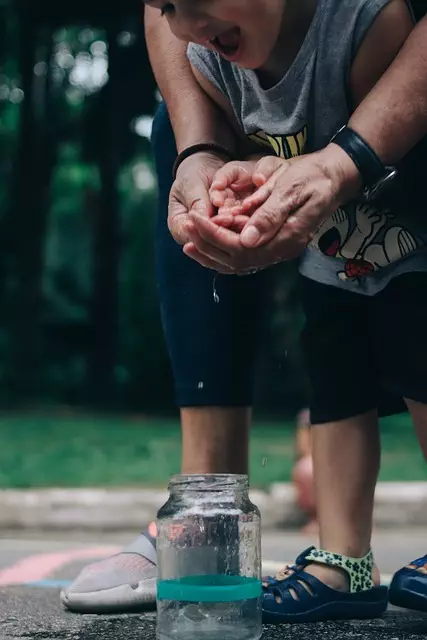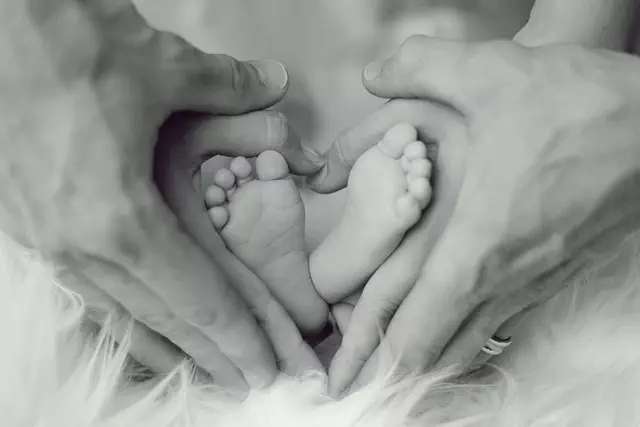Botox is a popular, effective solution for reducing the appearance of smile lines and crow's feet—common aging concerns. By relaxing facial muscles, Botox smoothes skin, creating a more youthful expression. It's particularly sought-after for crow's feet around the eyes and smile lines from corners of the mouth to nose. This injectable treatment disrupts nerve signals causing muscle contractions, preventing or minimizing fine lines. Results are visible within 24-72 hours, reaching maximum effect after about a week, offering gradual, natural-looking wrinkle reduction without surgery. Safety and effectiveness should be primary concerns; qualified healthcare providers mitigate risks like temporary redness, swelling, or muscle weakness. Post-procedure, minimal downtime with potential symptoms subsiding in days. Results last 3-6 months, requiring periodic injections every 3-6 months to maintain. Choosing the right injector—a board-certified dermatologist or experienced plastic surgeon—is crucial for natural, satisfying outcomes.
“Looking to bid farewell to smile lines and crow’s feet? Botox, a popular cosmetic treatment, offers a non-invasive solution for achieving a youthful appearance. This article delves into the science behind Botox, its effectiveness in reducing frown lines, and how it works as a game-changer for addressing crow’s feet. From understanding the concerns to choosing the right injector, we explore the complete guide to Botox treatments for smile lines, ensuring you’re informed every step of the way.”
Understanding Smile Lines and Crow’s Feet

Smile lines and crow’s feet are common concerns for many individuals as they age, often leading them to consider Botox treatments. These fine lines and wrinkles around the eyes and mouth are a natural part of aging but can be accentuated by various factors such as facial expressions, skin elasticity, and sun exposure.
Botox is a popular and effective solution for reducing the appearance of these subtle yet noticeable signs of aging. By relaxing the muscles responsible for causing these lines, Botox can smooth out the skin, creating a more youthful and relaxed expression. It’s particularly sought-after for treating crow’s feet (the wrinkles that form at the outer corners of the eyes) and smile lines (creases that run from the corner of the mouth to the nose).
The Role of Botox in Reducing Frown Lines

Botox has become a popular and effective solution for reducing the appearance of frown lines, often referred to as smile lines or crow’s feet. This injectable treatment works by blocking specific nerve signals that cause muscle contractions, which over time lead to wrinkles forming around the eyes and mouth. By relaxing these muscles, Botox can visibly smoothen out fine lines and wrinkles, giving the face a more youthful and relaxed appearance.
For those concerned about smile lines, this non-surgical procedure offers a quick and safe way to achieve a more aesthetically pleasing look. It is particularly effective for treating dynamic wrinkles, which form as a result of repeated facial expressions. Many individuals opt for Botox as a preventive measure, ensuring they don’t develop deep set frown lines or crow’s feet as they age.
How Botox Works for Cosmetic Purposes

Botox, a protein derived from bacteria, has revolutionized cosmetic procedures. When injected into specific muscles, it temporarily paralyses them, preventing contraction and thus reducing the appearance of fine lines and wrinkles. This is especially effective for treating crow’s feet and smile lines around the eyes and mouth. By blocking nerve signals, Botox smoothes out the skin, offering a more youthful and relaxed appearance.
The procedure involves tiny injections into targeted areas, usually done in-office with minimal discomfort. Results typically start to appear within 24 to 72 hours, reaching their maximum effect after about a week. This non-surgical approach provides a gradual and natural-looking reduction in wrinkles, making it a popular choice for those seeking to combat the signs of aging without invasive surgery.
Safety and Effectiveness Considerations

When considering Botox for smile lines, it’s crucial to understand safety and effectiveness considerations. This non-invasive procedure has gained popularity for addressing crow’s feet and smile lines by relaxing facial muscles that cause wrinkling. However, as with any medical treatment, there are potential risks and side effects to be aware of. It’s essential to consult a qualified healthcare provider who can assess your specific needs and ensure the best possible outcome.
The safety of Botox for crow’s feet and smile lines is primarily tied to its administration. Professional injections by a licensed expert significantly reduce the risk of adverse reactions, which may include temporary redness, swelling, or discomfort at the injection site. While rare, more serious side effects have been reported, such as muscle weakness or difficulty swallowing. Proper patient selection and tailored treatment plans are key to minimizing these risks, ensuring you receive the benefits of Botox safely and effectively.
The Procedure: What to Expect During Treatment

Botox treatment for smile lines is a quick and relatively painless procedure. During your appointment, a healthcare professional will begin by cleaning your skin and applying a topical numbing cream to minimize any discomfort. Using fine needles, they’ll inject Botox into the specific muscle groups responsible for causing frown lines and crow’s feet. The injections are usually well-tolerated, with only minimal redness or soreness at the treatment sites.
After the procedure, you may experience some temporary swelling or bruising, but these typically subside within a few days. You’ll be able to return to your normal activities right away, although it’s recommended to avoid strenuous exercise for 24 hours and to steer clear of sun exposure while your skin heals. The effects of Botox usually start to become visible within 2-7 days, reaching their peak around 2 weeks after treatment, offering a noticeable reduction in both crow’s feet and smile lines.
Recovery Time and Potential Side Effects

After receiving Botox for crow’s feet and smile lines, it’s important to understand the recovery process. Typically, patients experience minimal downtime with only temporary redness or swelling at the injection sites. These side effects usually subside within a few days. It’s crucial to follow your healthcare provider’s aftercare instructions, which may include avoiding strenuous activities and certain medications for a specified period. Resting and staying hydrated can aid in a smoother recovery.
While Botox is generally safe, there are potential risks to consider. As with any medical procedure, there’s a slight chance of infection or bleeding. More commonly, patients may experience temporary muscle weakness or asymmetry in their facial expressions. These side effects are usually mild and resolve on their own within a few weeks. It’s essential to communicate any concerns or unusual symptoms to your healthcare provider promptly. They can offer guidance tailored to your specific case.
Long-term Benefits and Maintenance

Botox has proven to be a popular and effective treatment for both crow’s feet and smile lines, offering significant long-term benefits. The effects typically last between 3 to 6 months, providing individuals with a reduced appearance of wrinkles for an extended period. This longevity is one of the key advantages over other anti-aging treatments that may only offer temporary relief.
Regular maintenance is essential to sustain the results, especially as these fine lines and wrinkles have a tendency to reappear over time. Many people choose to schedule periodic Botox injections every 3-6 months, depending on their skin’s response and desired outcome. This proactive approach ensures that smile lines and crow’s feet remain minimal, allowing individuals to enjoy a youthful appearance for longer without significant effort.
Choosing the Right Injector for Your Needs

When considering Botox for both crow’s feet and smile lines, choosing the right injector is paramount. It’s not just about finding a qualified professional; it’s also about aligning with someone who understands your specific concerns and aesthetic goals. Look for a board-certified dermatologist or experienced plastic surgeon who has a proven track record in non-surgical facial rejuvenation. An expert in Botox will assess your skin, discuss your expectations, and tailor the treatment to your needs, ensuring natural-looking results.
Beyond qualifications, consider their approach to patient care. A good injector should take time to listen to your worries, answer all your questions, and address any fears you might have. They should also be upfront about what Botox can achieve for your smile lines and crow’s feet, setting realistic expectations. This open communication ensures that you’re comfortable throughout the process and satisfied with the final outcome.
